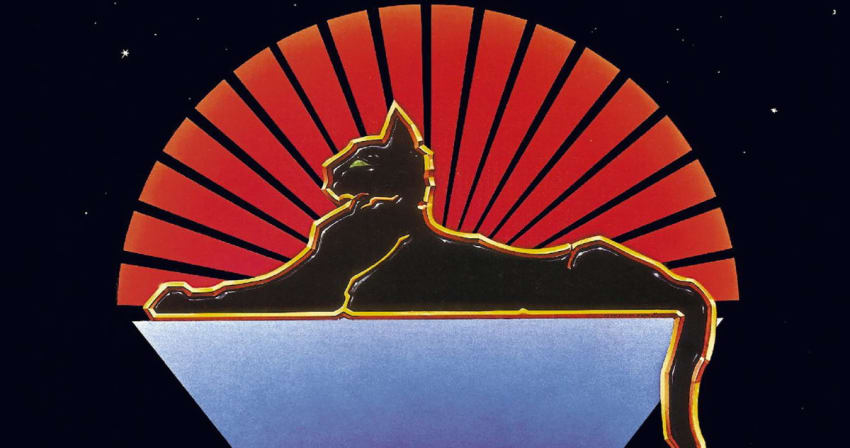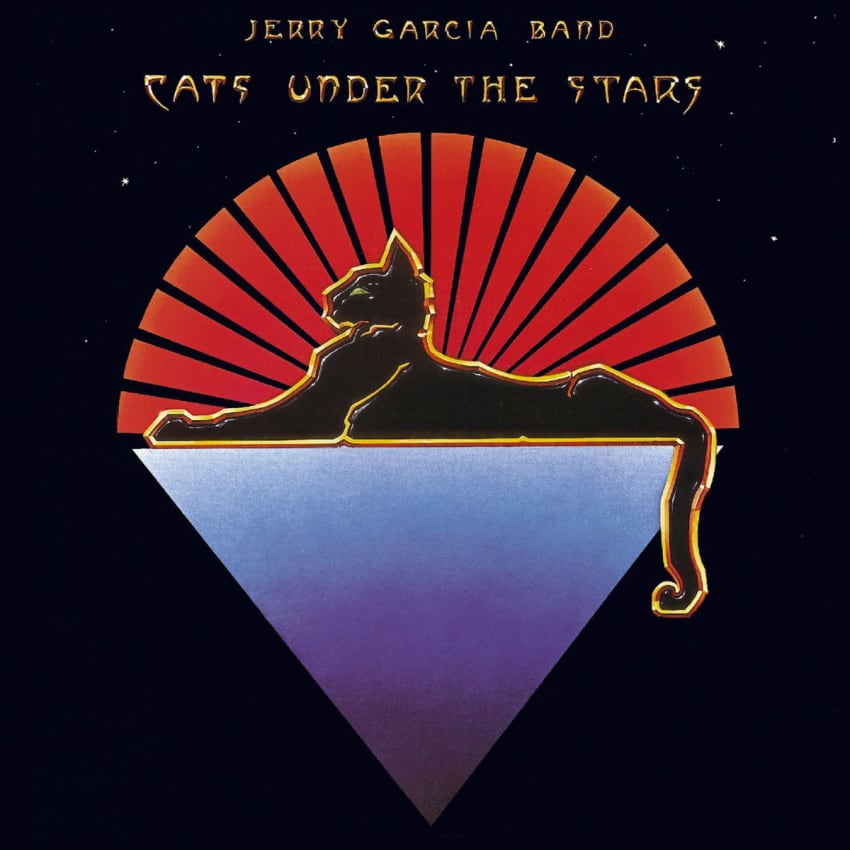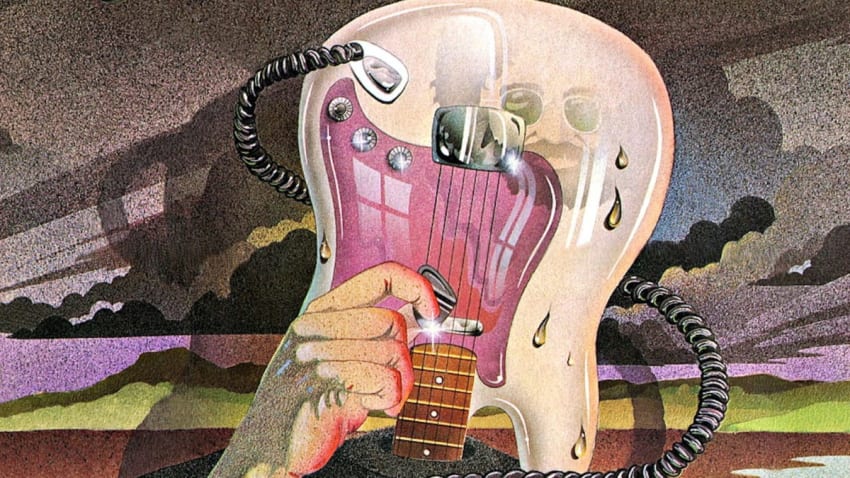Days Between Deep Dive: Jerry Garcia Band’s Album ‘Cats Under The Stars’
By Andy Kahn Aug 6, 2020 • 10:19 am PDT

Grateful Dead guitarist Jerry Garcia was born on August 1, 1942 and died on August 9, 1995 at the age of 53. For 25 years, the “Days Between” Garcia’s birthday and the anniversary of his untimely death have been an annual period of reflection and admiration for the legendary musician’s career. This week JamBase honors the Days Between with daily deep dives into Jerry’s five solo studio albums, continuing with today’s look at the Jerry Garcia Band’s 1978 album, Cats Under The Stars.
Days Between Deep Dives
By 1978 Jerry Garcia had established a steady pattern of releasing a solo album every two years, starting with 1972’s Garcia, 1974’s Compliments, 1976’s Reflections and 1978’s Cats Under The Stars. The difference between Cats Under The Stars, which came out on Arista Records in April 1978, was that it was officially credited to the Jerry Garcia Band.
Though its membership would fluctuate over the years, the Jerry Garcia Band made its debut in 1975. The band was not Garcia’s first solo endeavor during his tenure with the Dead. Along with helping to co-found New Riders Of The Purple Sage in 1969, Garcia had previously performed in the early-1970s with keyboardist Howard Wales, as well as with keyboardist Merl Saunders, the latter of which would also join Garcia in Legion Of Mary and Reconstruction, among other projects. Jerry was also a member of the short-lived Great American String Band and the all-star bluegrass band Old & In The Way that featured Jerry on banjo, Peter Rowan on guitar, David Grisman on mandolin, Vassar Clements on fiddle and John Kahn on bass.
Kahn was also a member of the original Jerry Garcia Band lineup along with drummer Ron Tutt and keyboardist Nicky Hopkins. Tutt was known for being Elvis Presley’s drummer, while Hopkins earned notoriety for his work with The Rolling Stones (that’s him on “Loving Cup” and many other Stones’ favorites), The Kinks, The Who and several more rock ‘n’ roll icons.
Advertisement
In early-1976, a Jerry Garcia Band lineup debuted featuring Garcia, Kahn and Tutt, with Jerry’s at-the-time Grateful Dead band mates, keyboardist Keith Godchaux and vocalist Donna Jean Godchaux. It was this group of musicians that recorded Cats Under The Stars, during recordings sessions held between August and November 1977 at the Grateful Dead’s Le Club Front rehearsal space in San Rafael, California.
Despite its lack of sales, Garcia called Cats Under The Stars his “favorite” solo album in a 1981 interview with Blair Jackson and David Gans. In the same interview, Garcia said Cats was “the one that I’m happiest with, from every point of view in which I operate on that record.”
Jerry’s thoughts on Cats Under The Stars were part of Jackson’s book Garcia: An American Life, which quotes Garcia in early-1990s as saying, “As far as I’m concerned Cats Under The Stars is my most successful record – even though it’s my least successful record! I’ve always loved it and it just never went anywhere.”
Tutt, who left JGB just before Cats Under The Stars was released, discussed the album in a 2017 interview with David Browne of Rolling Stone about the 40th anniversary reissue of the record.
Jerry would often call Cats Under The Stars his best album. Did he express his goals for the record to you?
Tutt: He was ready for another chapter in his music. He was ready to move into – I don’t know how to say it, it’s not necessarily pop music, but he was ready to move on to find something that was more reflective of what he was writing and thinking about at that time, instead of doing cover songs like Smokey Robinson songs. All those songs are great, and they’re fun to play, but as far as the commercial aspect of it, he wasn’t above making money.
I think he enjoyed the freedom we gave him to be able to do just different things he would always wanted to try. So in that sense, it was experimental and he got a chance to just try different musical styles and genres. I think he needed that kind of a challenge. It opened him to a whole different approach. It was different than, say, Legion of Mary, where it was kind of a jam band [laughs].
What did you make of the album after hearing it again after so long?
Tutt: I’d forgotten how much production had gone into it, but not in a bad way. Strangely enough, I thought there were certain tracks there that were real Beatle-esque, real McCartney-and-Lennon–sounding. I thought some of it was very inventive. Some of it was straight-ahead like “Rhapsody in Red.” And “Love in the Afternoon” was a really cool thing, kind of pseudo-reggae. That’s just something we all played and felt we thought would work. Jerry was never any kind of guy to ever say, “Hey, try this and we need so-and-so people for this.” He was very loyal to his band in that way.
Advertisement
According to Tutt, Club Front “never really was a serious studio, but it had a pretty decent sound.” In a March 1978 interview with Andy Gefen, Garcia discussed recording Cats, stating:
Garcia: So we were playing in there [Club Front] and we were making just little cassettes for practice purposes. We were working on the material and, uh, Tutt was attracted to it. He liked the drum sound in the room and, uh, we hadn’t, hadn’t really thought about it before. So we whipped the place into a recording studio in about — it took about a month to do it, two months maybe.
And this whole record is fundamentally, on a technical level, it’s totally homemade. I mean, everything that was done was done, right. It was all done in the same room. You know, we didn’t carry the tapes around …
The neat thing about it is that the room that we were working in — it just sounds beautiful. It sounds better than any studio I’ve ever worked in, in terms of the room sound, you know, so the vocal quality of the instrumental quality of the drum sound, all the sounds that are recorded in the room, there’s horns and strings and things like that on, on there as well. Everything else just has a very articulate, nice sound.
I’m happiest with this record of all the ones we’ve done and it’s neat because it’s all original material. All the material is our own stuff.
Kahn was quoted by Jackson in his book, revealing the following about the recordings sessions:
Kahn: We put so much blood into that record. That was our major try. It was all new material and we did it ourselves. We spent so many hours in the studio. When we were inside there we didn’t know if it was day or night except for this one little crack in the ceiling that would allow you to see if it was dark or light. I remember one stretch where it changed three times before I left the studio.
Advertisement
In the same 1978 radio interview, Garcia said he considered production on Cats to be a collective band endeavor. However, they were assisted by Bob Matthews and Betty Cantor-Jackson, sound engineers who worked closely with the Grateful Dead and Garcia both in the studio and in the live setting, who were part of the Cats sessions at Club Front. The pair had previously been part of the team credited with producing Jerry’s 1972 solo debut LP, Garcia. Bob and Betty were assisted by veteran Grateful Dead crew members, Steve Parish, Bill [“Kidd”] Candelario, Ramrod [Laurence Shurtliff] and Harry Popick.
The sessions yielded an album made up of eight original songs, five of which were composed by Garcia and his acclaimed writing partner, lyricist Robert Hunter, “Rubin And Cherise,” “Palm Sunday,” “Gomorrah” and the title track. “Rhapsody In Red” was written by Garcia, Hunter and Kahn, while “Love In The Afternoon” was just Kahn and Hunter. The brief “Down Home” was solely credited to Kahn and “Rain” was composed entirely by Donna Jean Godchaux.
The album’s opening track, “Rubin And Cherise,” was the only song Garcia brought to the Grateful Dead’s live stage (though it appeared just four times in 1991). Hunter’s book of lyrics, Box Of Rain, alters the spelling of the two titular names to “Reuben” and “Cérise,” which is how it was formatted on later releases. A staple of JGB shows, Hunter recorded his own version of “Reuben And Cérise,” for inclusion on his 1980 solo album, Jack O’ Roses with slightly altered lyrics from the Cats recording.
Merl Saunders added organ to “Rubin And Cherise,” which also featured Keith Godchaux’s brother Brian Godchaux and Brian’s wife at the time Candy Godchaux (Candy Girard) on violin. The track also featured horn player Steve Schuster who also appears on the Grateful Dead’s album’s Blues For Allah and Shakedown Street. Those auxiliary players contributed to other Cats Under The Stars recordings, the title track, “Rhapsody In Red” and “Rain” among them.
The Kahn/Hunter co-write, the reggae-tinged “Love In The Afternoon,” was one of two tracks on the album featuring vocalist Maria Muldaur. Garcia frequently played the song with his various JGB lineups. Muldaur’s backing vocals appeared on the Compliments recording of “Let’s Spend The Night Together” by The Rolling Stones. Muldaur, who was dating Kahn during the Cats era, had released her self-titled debut album in 1973 featuring the hit single “Midnight At The Oasis,” and an impressive group of contributors including Grisman and future JGB member Gloria Jones.
Muldaur shows up again at the end of the album, adding backing vocals to the record’s closing track “Gomorrah,” whose lyrics are based on the biblical story of Sodom and Gomorrah. Not credited on the album, harmonica player David Burgin can be heard on the fellow biblical tune, “Palm Sunday,” which never caught on in the live setting. Another uncredited musician, French horn player Stuart Gronningen of the Oakland Symphony Orchestra, was brought in for “Rain,” which was never performed live by Garcia.
A song that was played often by JGB was the record’s title track, “Cats Under The Stars.” JGB also played “Rhapsody In Red” with regularity after the album’s release, but it fell out of rotation in the mid-1980s.

The cover art was created by longtime Grateful Dead creative cohort Stanley Mouse, who along with Alton Kelley designed many of the Dead’s album covers and concert posters. The Mouse Studios entry for Cats Under The Stars describes the inspiration behind the imagery as well as the importance of the piece for Mouse:
Released in 1978, Cats Under The Stars was the Jerry Garcia Bands only studio released album. The same year that the Cats album was released the Grateful Dead played in Egypt. Phil Lesh of the Grateful Dead spearheaded a project to play concerts at places of power, the Egyptian pyramids were the number one choice. The Egyptian imagery was so powerful that it influenced much of the art that was to come. The em>Cats Under The Stars album was a turning point for Mouse and Garcia. Garcia broke away from the Grateful Dead and Stanley broke away from Kelly, creating the album art as a solo artist. You can see the Cat image everywhere from hats to tattoos.
Stream Jerry Garcia Band’s 1978 album, Cats Under The Stars, plus the bonus tracks discussed here, below:




